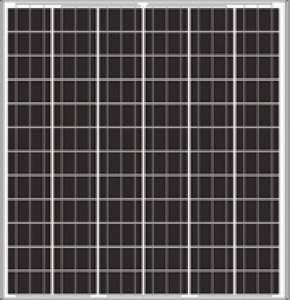Description
Poly-Crystalline Photovoltaics: Affordable Solar Power for Your Needs
Poly-crystalline photovoltaic (PV) solar panels are a popular and cost-effective choice for residential, commercial, and utility-scale solar power projects. Offering a compelling balance of performance and affordability, these panels are a reliable solution for harnessing the sun's energy.
What are Poly-Crystalline Solar Panels?
Unlike their monocrystalline counterparts, poly-crystalline solar cells are made from multiple silicon crystals melted and solidified together. This process, while less energy-intensive and therefore more cost-effective, results in a slightly less efficient energy conversion rate. The resulting dark blue or black appearance, speckled with lighter areas, is a distinguishing feature of these panels.
Key Features & Benefits:
- Cost-Effective: Poly-crystalline solar panels are generally cheaper to manufacture than monocrystalline panels, making them an attractive option for budget-conscious consumers and large-scale projects where cost is a significant factor.
- Good Performance: While slightly less efficient in peak sunlight conditions than monocrystalline panels, poly-crystalline panels still deliver respectable power output and offer a strong return on investment over their lifespan.
- Widely Available: Their widespread production and popularity ensure easy accessibility and a robust supply chain, reducing lead times and facilitating easier procurement.
- Temperature Tolerance: While all solar panels experience efficiency drops in high temperatures, poly-crystalline panels often demonstrate slightly better temperature coefficients, maintaining performance more effectively in hotter climates.
- Suitable for Various Applications: Their versatility makes them suitable for a range of applications, from rooftop installations on homes and businesses to larger ground-mounted solar farms.
Technical Specifications (Typical Values - May Vary by Manufacturer and Model):
- Efficiency: 15-17% (lower than monocrystalline panels)
- Cell Type: Poly-crystalline silicon
- Power Output: Varies greatly depending on panel size and manufacturer, ranging from a few hundred watts to over 400 watts per panel.
- Warranty: Typically comes with a 10-25 year product warranty and 25-30 year performance warranty, ensuring long-term reliability.
- Appearance: Dark blue or black with visible lighter crystalline structures.
Applications:
- Residential Solar Systems: Ideal for homeowners looking for a balance between performance and affordability.
- Commercial Solar Systems: Suitable for businesses seeking to reduce their energy costs and carbon footprint.
- Utility-Scale Solar Farms: Cost-effectiveness makes them a viable choice for large-scale solar power generation projects.
Considerations:
- Lower Efficiency: Compared to monocrystalline panels, poly-crystalline panels produce slightly less energy per square foot.
- Appearance: The speckled appearance might be a less aesthetically pleasing option compared to the uniform dark blue of monocrystalline panels.
Conclusion:
Poly-crystalline photovoltaic panels are a reliable, cost-effective, and widely available option for harnessing solar energy. While their efficiency might be slightly lower than monocrystalline panels, their affordability and performance make them an excellent choice for many solar energy applications. Choosing the right panel type ultimately depends on individual needs, budget, and project requirements. Consult with a solar energy professional to determine the best solution for your specific circumstances.
